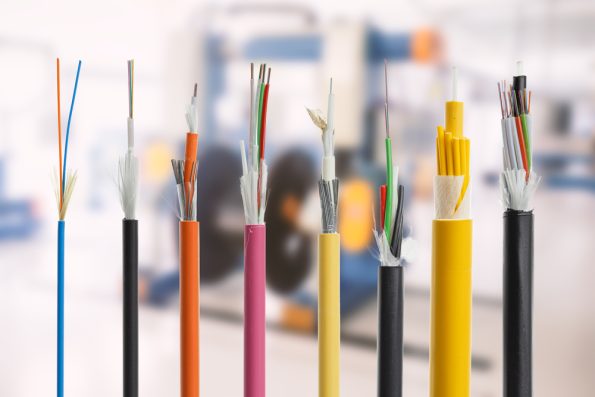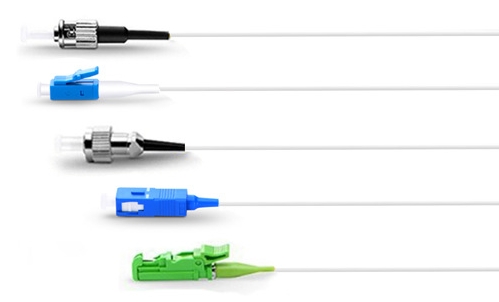In fiber optic networks, selecting the appropriate type of cable is crucial for achieving optimal performance. Two common options are optical fiber pigtails and specialty fiber cables. But what sets them apart? Let’s explore their unique features, advantages, and applications to help you make an informed decision.

Understanding Optical Fiber Pigtails
Optical fiber pigtails are short optical fiber cables with connectors at one end, used to connect optical fibers to various components within a network. Primarily, they serve as transition cables, connecting network fibers to active devices or patch panels. Their simplicity and ease of installation make them popular for low-maintenance setups.
Connector Variety: Available in many connector types (e.g., LC, SC, ST) to match diverse requirements.
Single or Multi-fiber Options: Simplex Fiber Pigtails (single fiber) are for straightforward connections, while Multi-fiber Pigtails serve higher capacity needs.
Use Cases: Pigtails are often used for connecting fibers in telecom closets, patch panels, and fiber optic terminals, especially where high precision and reliable connections are necessary.

Specialty Fiber Cables: What Sets Them Apart?
Specialty Fiber Cables are designed for unique environments or applications requiring extra protection, higher performance, or specific functionality. They come in various types, each tailored to specialized needs.
Armored Cables: For extreme durability in harsh environments; these have a protective metal layer, providing strength and resistance to crushing or rodent damage.
Fiber Loopback Cables/Modules: Used for testing purposes, these help verify if a network connection is functioning correctly by “looping back” the signal.
Industrial Cables: Built for rigorous industrial settings, these cables can withstand extreme temperatures, chemical exposure, and rough handling.
PM Cables (Polarization Maintaining): Designed to preserve polarization, making them ideal for high-precision applications like telecommunications and scientific research.
Use Cases: Specialty Fiber Cables suit environments requiring specific physical and performance features. For example, Armored Cables are used outdoors, while PM Cables excel in sensitive data transmission.
How to Choose Between Optical Fiber Pigtails and Specialty Fiber Cables
When selecting between these two options, consider the following factors:
Installation Environment: If the setup is sensitive and requires robust protection, Specialty Fiber Cables with added features like Armored or Industrial options may be preferable.
Network Functionality Needs: Optical Fiber Pigtails are ideal for basic network setups, whereas Specialty Fiber Cables cater to advanced or environmental demands.
Budget and Maintenance Requirements: Specialty Fiber Cables often cost more due to additional protection or functionality but offer long-term resilience in demanding setups.
Conclusion
In summary, Optical Fiber Pigtails and Specialty Fiber Cables each serve distinct roles within fiber optic networks. Optical Fiber Pigtails provide a straightforward, reliable connection solution, while Specialty Fiber Cables meet specific performance and environmental needs. Choosing the right type depends on your network’s physical demands and technical requirements. With this understanding, you’re now equipped to select the most suitable option for your fiber optic system.










